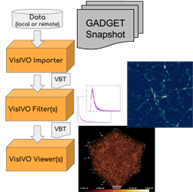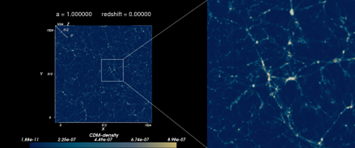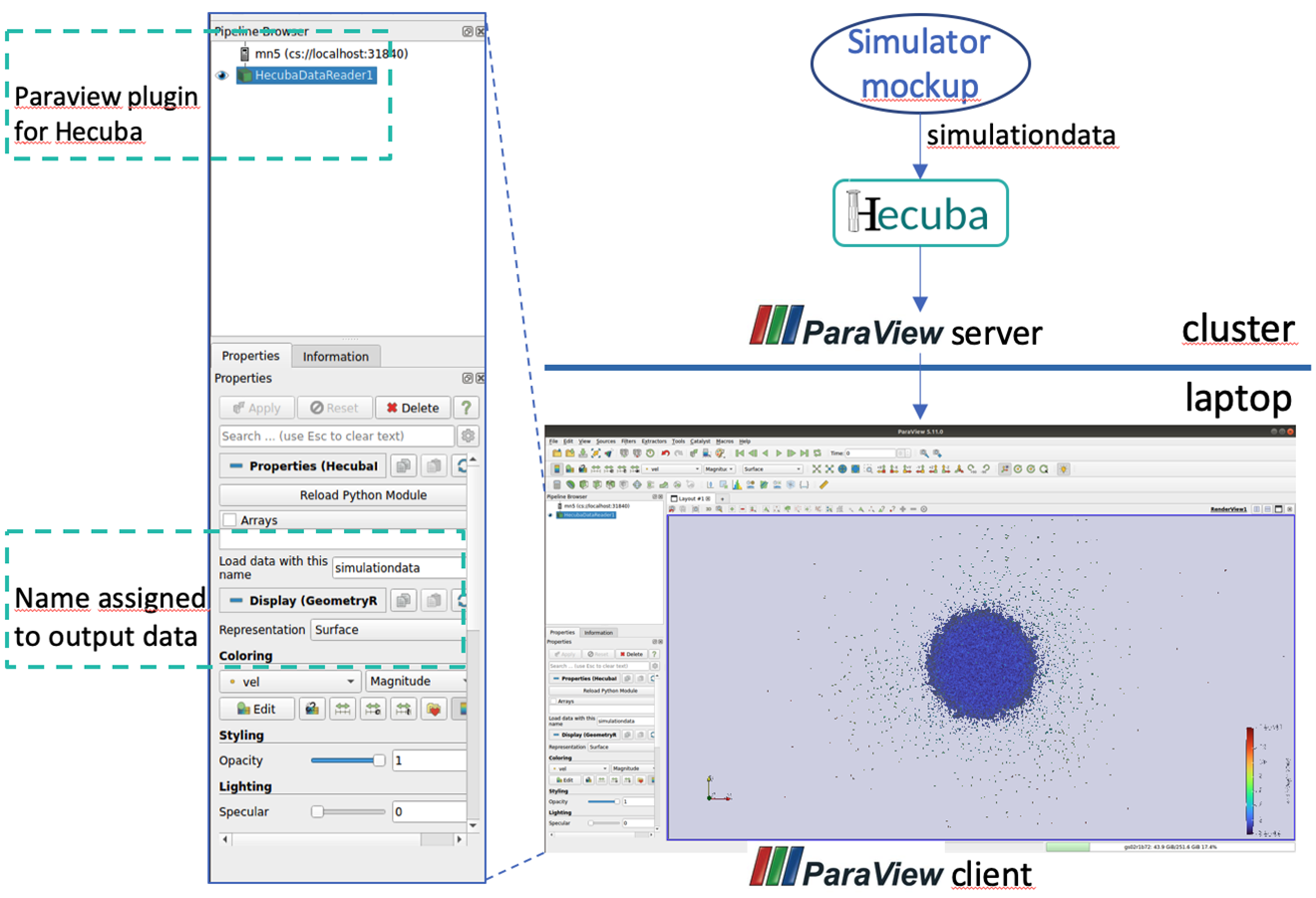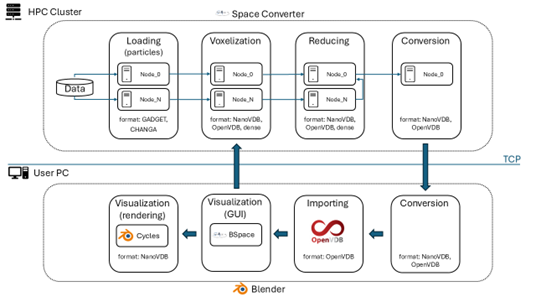VisIVO
Responsible Partner: INAF
VisIVO (Visualization Interface for the Virtual Observatory) performs multi-dimensional data analysis and knowledge discovery of a-priori unknown relationships between multivariate and complex datasets in Astrophysics and Cosmology.
In particular, VisIVO Server offers high performance visualization on distributed and high performance platforms supporting particles and volume rendering of very large scale datasets.
In SPACE CoE we are further developing VisIVO to enhance the portability and reproducibility of the VisIVO modular applications for high performance visualization of data generated on the (pre-)exascale systems by the A&C simulations thanks to workflow systems that simplify the definition, execution, and management of the different visualization tasks. Our strategy consists of the integration of VisIVO with StreamFlow, which addresses the need to improve portability by decoupling multiple components from platform-specific dependencies, while also fostering reproducibility and maintainability. Moreover, the proposed solution takes advantage of a flexible resource use over heterogeneous HPC facilities.
Repo: github.com/VisIVOLab/VisIVOServer
Documentation: visivo.readthedocs.io/en/latest/
Video material: VisIVO for DEMNuni 2 | VisIVO for DeMNUni

Typical visualization pipeline in VisIVO (showing its three main modules) applied to GADGET cosmological simulation outputs.

Examples of VisIVO workflow outputs. Volume rendering of Cold Dark Matter particles of a large-scale GADGET cosmological simulation at redshift z = 0.

